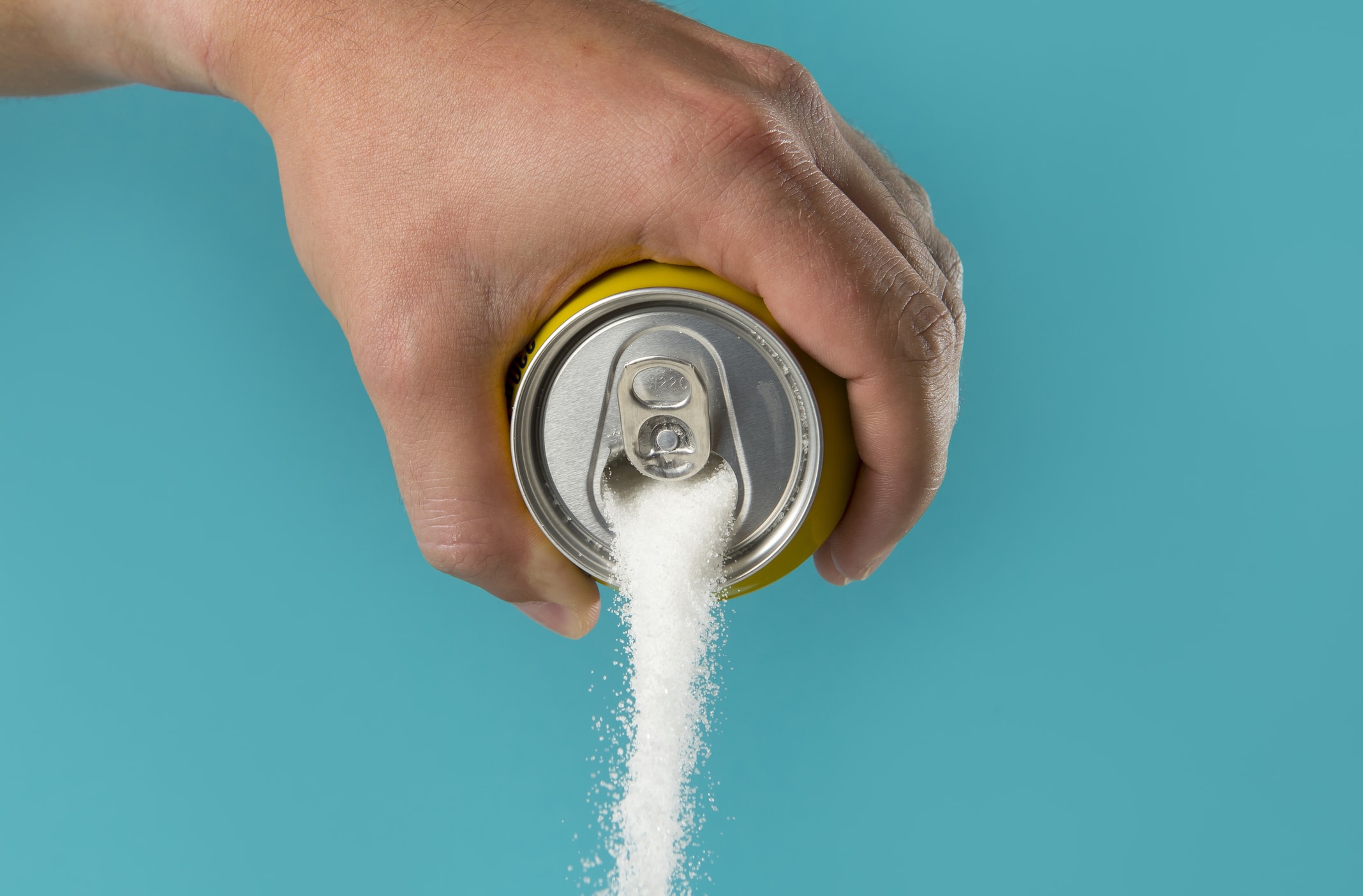Sugar has become public enemy number one over recent years, as the alarming amounts of the sweet stuff we unwittingly consume has come to light.
From yogurts and breakfast cereals, to sauces and breads, sugar can be particularly difficult to nix from your diet, as it’s often lurking in many everyday supermarket foods. Even snacks that seem like healthier options, like reduced-fat biscuits, can be high in the sweet-tasting substance.
A report by market researchers Euromonitor found that many Brits consume up to 50% more sugar than they think, and many of us are packing in twice as much in a day as the global average.

We’ve had it drummed into us since childhood that sugar is terrible for our teeth, but eating too much added sugar is also associated with a whole host of health problems, like obesity and an increased risk of heart disease and type 2 diabetes.
“A little sugar is fine, but too much is bad for our health, so it is important to know how much is OK and how to make changes if we’re eating overdoing it,” says Dr Prudence Knight, from online GP service Push Doctor (pushdoctor.co.uk). “The recommended limit for adults is 30g of free sugar per day, for children aged seven to 10 it’s 24g per day, and for children aged four to six, it’s 19g per day.”
Free sugars are those added to foods or found in syrup, honey or fruit juice and smoothies, and don’t include the naturally occurring sugars we consume in things like milk, whole fruits and vegetables.
Now that’s cleared up, here, Knight, along with leading Harley Street nutritionist Rhiannon Lambert (rhitrition.com), share top tips for curbing the white stuff for good…
1. Check the back of the packaging
“There are a variety of foods and drinks on the shelves these days and it is often difficult to determine just how good for us they are,” says Lambert. “For example, a ‘healthy’ drink that may appear to be a good choice, may contain 20 or 30g of sugar per serving.”
She recommends always checking the back of the packaging – look under ‘carbohydrate: of which sugars’ on the food labelling. “Another key area to watch out for is condiments, as sauces often have a lot of sugar,” she adds.
2. Check the sugar content per 100g
Flip over the back of your product and you’ll find that nutrition information is usually provided per 100g, and it’s sometimes noted per portion of the food too. “If you go by the 100g figure, you can easily compare the sugar content of one product to another,” says Lambert. “Many products will give you macronutrients based on ‘portion size’, which might only be a quarter or half of what you would consume.
“From 100g, it’s then usually easy to work out the sugar content of the whole product, if it’s not already listed. For example, if there is 5g sugar per 100g in a 400g container, that means there’s 20g in the whole product.”
3. Re-educate your palate
The easiest way to kick those perky midday chocolate cravings at work? Put a block on your sweet tooth outside of the office.
“Try to reduce the amount of sweeteners you consume,” says Dr Knight. “This can help you get used to less sweet tastes which, in turn, should reduce your sugar consumption.”
4. Look for hidden sugars
“Sugars can be labelled in more than one way,” says Lambert, “and if you’re not familiar with them, you may not realise you’re eating them.”
Nectar, dextrose, fructose and molasses are all examples of sugars under different guises – so keep an eye on the ingredients list and, if in doubt, a quick Google check should clarify.
5. Keep fruit juice and smoothies to 150ml or less each day
There’s nothing better than a cold glass of OJ in the morning, but overindulging on breakfast juices is an easy way to go well over the recommended sugar intake before you’ve even left the house.
“While they do contain vitamins and minerals, it’s easy to over consume juices, and they’re terrible for your teeth due to the combination of high acid and sugar levels,” says Knight. She recommends drinking no more than a 150ml serving per day.
6. Choose low-sugar alternatives
Opting for a low-sugar alternative is the simplest way of cutting down your daily intake. “If you switch an 85g pot of fruit fromage frais for plain Greek yoghurt sweetened with chopped fruit, you’ll save 10g of sugar, which is half the daily recommended amount for a six-year-old,” says Knight. “Meanwhile, standard tomato ketchup has around 23% sugar, but you could easily switch this for a reduced or sugar-free version instead.”
7. Rethink your snacks
Everyone needs a snack between meals occasionally – but too many sugary treats can easily start to add up.
“Snack foods such as protein bars often contain added sugars and artificial sweeteners,” warns Lambert. For a nutritious and cheap pick-me-up, she suggests grabbing a handful of nuts and a banana instead.
8. Say goodbye to fizzy drinks

“Many fizzy drinks have a lot of added sugar,” says Knight. “In fact, a can of Coca Cola has 35g of added sugar, which is more than the recommended limit for an adult.” She recommends switching your high-calorie fizzy drinks for water, tea or diet drinks, which contain no added sugar.
9. Make small manageable changes over time
Finally, it’s crucial to think of quitting sugar as a gradual process, rather than a habit you’re going to quash overnight. Many of us are unknowingly addicted to sugar, which makes it a difficult cycle to break free from. “Start small,” says DrKnight, “this way, you’re more likely to stick to your changes, than throwing out all of your old habits then getting fed up after a week.”
Begin by cutting out unnecessary sugary drinks and snacks from your daily routine, and then you’ll be better placed to start conquering your cravings completely.





